Orcasound -- Listen for Whales
Synergistic DCL competition between humans and machines.
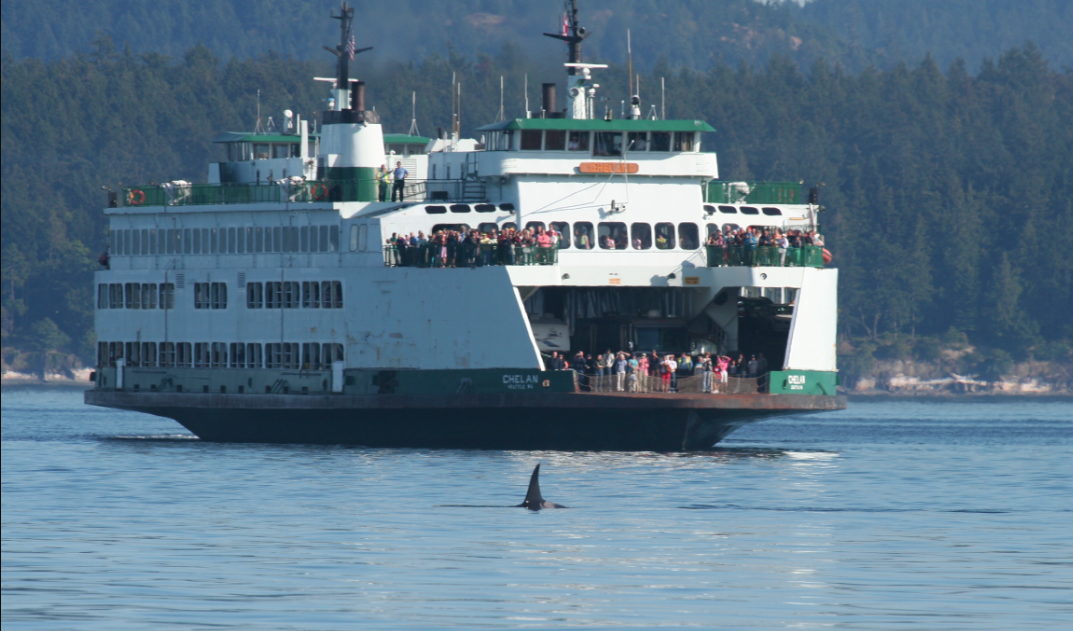
Scott and Val Veirs, Beam Reach, SPC
Detection, Classification, and Localization (DCL) Workshop
Organized by WWF Canada | 27 Sep 2018 | Victoria, BC
Early history of U.S. Salish Sea hydrophone networks
Extracted from Chronology of hydrophones in the Salish Sea (U.S. and Canada, including Johnstone Strait)
|
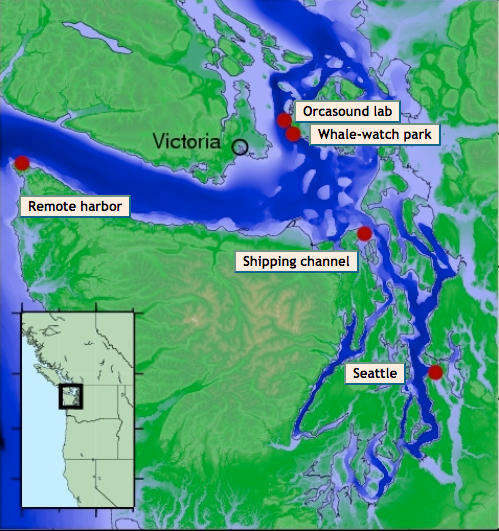
Neptune's fist! |
Orcasound financial history
From government grants to crowdfunding
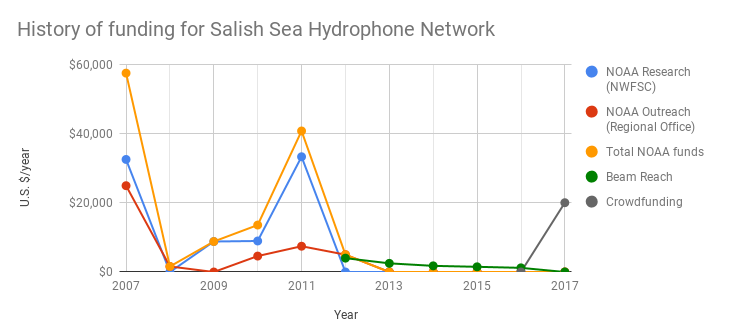
2007-2012
|
2012-present
|
Orcasound organization
A cooperative of non-profit education/outreach organizations, tech specialists, and researchers
Orcasound hydrophone network organizational members (as of fall 2018):
Beam Reach, SPC
Colorado College, Physics & Environmental Science
Orca Network
Port Townsend Marine Science Center
Orca Behavior Institute
Cetacean Research Technology
Whale Scout
Deep Green Wilderness
Oceans Initiative
Friends of Lime Kiln Society (FOLKS)
The Whale Trail
The Center for Whale Research
You can join Orcasound, too! Just read and e-sign the MOA.
Orcasound 2.0: new locations, node hardware/software, and app in 2018
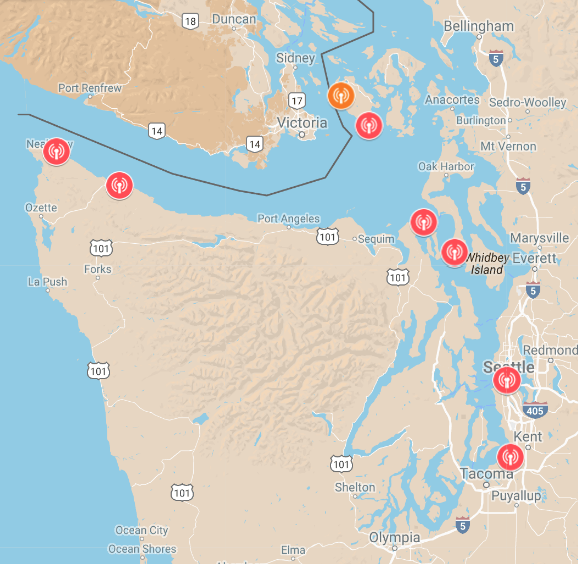 |
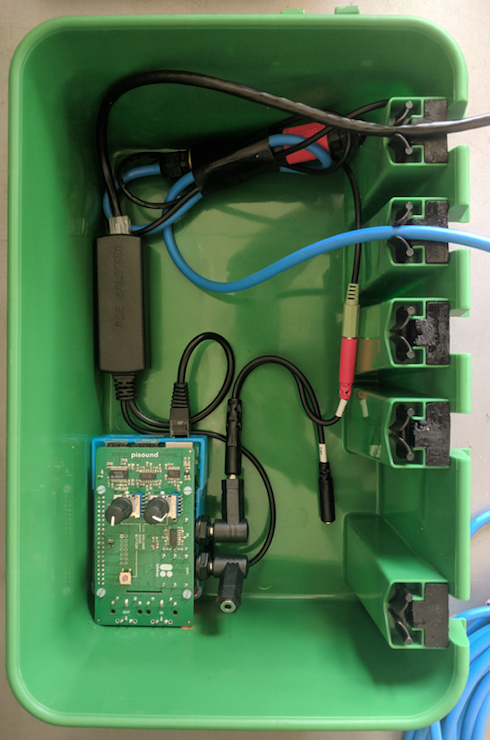 |
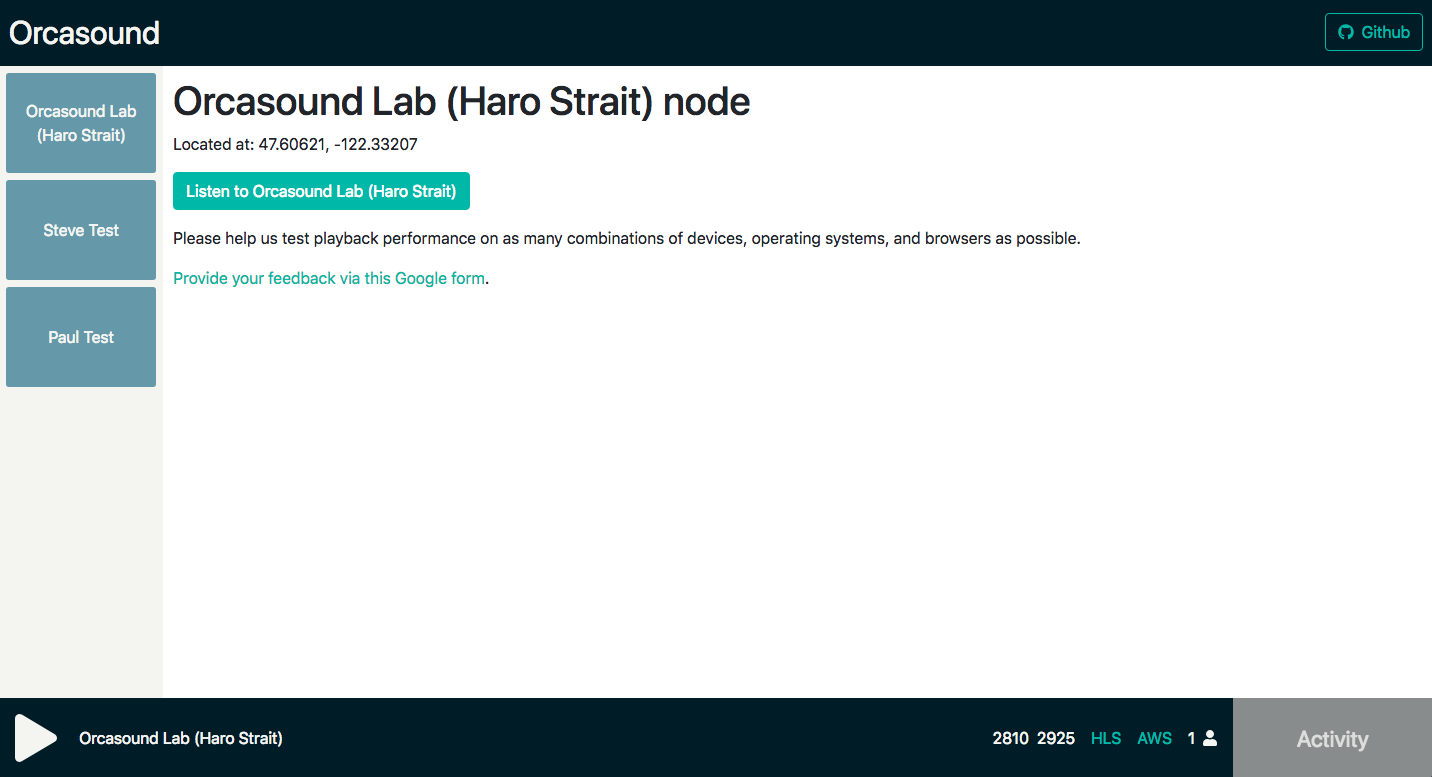 |
Vision: Open source software, open data access, real-time engagement of citizen scientists and cloud-computing
Real-time inspiration: ~5 decades of live-stream pioneering by OrcaLive (Paul Spong and Helena Symonds)
Thanks to all the backers of the 2017 Kickstarter, plus our app key developers/designers to date:
Paul Cretu, Skander Mzali, Steve Hicks, Tyler Crisafulli, Nóra Mészáros, Liam Reese, and participants in the 2018 Civic Hackathon
Public release of Orcasound app in early October at live.orcasound.net
New locations
Outreach/education nodes
Hydrophone nodes
|

|
New node hardware
Can we deploy a hydrophone node for less than $1000 (U.S.)?!
Basic ingredients (and costs):
60% of cost is hydrophones! (>75% for minimal research-grade)To make your own, see this detailed post about Orcasound's new hardware and software... |
 |
New node software
Can we stream using open-source software?
- ffmpeg and/or test-engine-engine-tools -- encode audio data (compressed stream and/or lossless archive)
- HTTP-based protocols:
- HLS (HTTP Live Streaming, aimed at iOS/Safari) and
- MPEG-DASH (Dynamic Adaptive Streaming over HTTP, for everything else)
- Current solution is HLS segments streamed via a video.js player and FLAC format for the archive (but long-term dream is FLAC within DASH)
And archive lossless data in the cloud?
- Amazon’s Simple Storage Services (S3) -- cost-effective data storage, public access, and automated management
- Upload script currently bash calling s3fs, but new python script will be optimized for live streaming and power/Internet outages
- FLAC files are currently 30 seconds long
Machine learning challenges (Nov 17 'Hack to give thanks')
- Bring citizen scientist real-time detections and classifications into live spectrogram display like Cornell's real-time bird call classifier
- Build training data set of killer whale signals for machine learning
- Learn from expert's catalog of signals (~40 types of "pulsed calls")
- Clip isolated, clear calls from continuous recordings of wild killer whales
- Discuss and implement architecture for machine learning
- Review existing data architecture and flow
- Adjust AWS security and set up hackathon participant access
- Access FLAC audio data in AWS S3 buckets
- Discuss and access EC2 Linux instance and other relevant services (e.g. Cloud9, Lambda?)
- Build out Orcadata Git repository: a docker-based Python analysis environment, or ??
- Integrate machine learning approaches and products into Orcasound app
- Orientation to the app, audio data scheme, and Orcasite Git repository (Backend is an Elixir app using the Phoenix framework. The Phoenix app serves a React app.)
- Discuss how algorithmic and human detection (Activity button presses) and classification could work synergistically
- Implement integration, including visualization and notifications (moderated or automated)
Learning library assets: Ford-Osborne call catalog
- ~2004: Colorado College students built old version
- 2018: Civic Hackathon particpants building new version using:
- flac files made from original tape recordings (.wav files created by CC project?)
- ffmpeg to convert audio files (flac -> ogg + mp3)
- Python to generate spectrograms from audio data (ideally flac)
Next tools: Bigg's/transient library; common local fish sounds?
Historic DC effort: WhoListener

Admiralty Inlet study (unpublished): of 22 SRKW transits, humans detect 45%, Wholistener 64%, combined 77%. (71/79/93 during local daytime)
Current DC effort: Zorbita
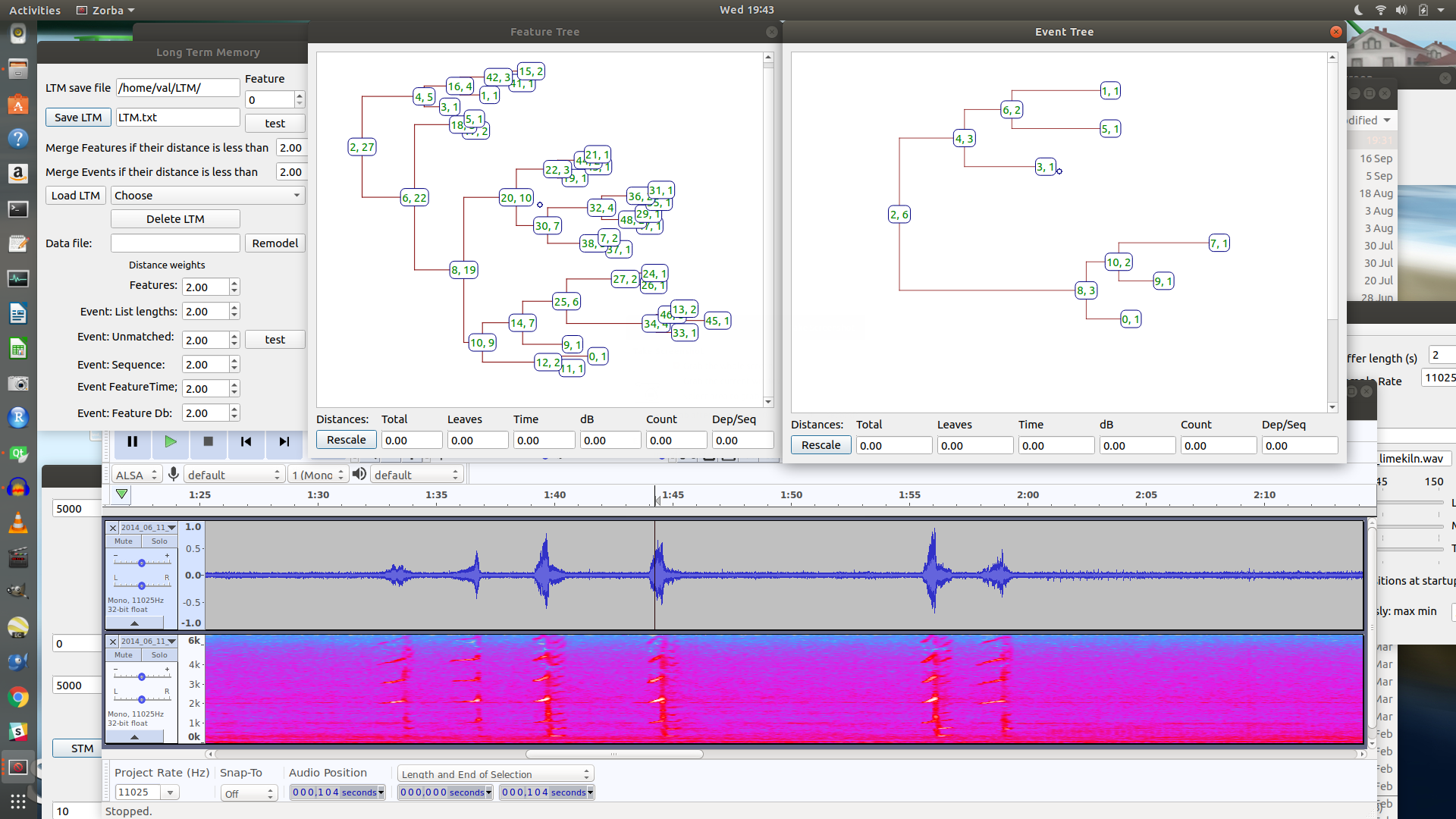
Questions?
Orcasound app
Can we make it really easy to listen (with a web app)?
Heroku-hosted web site implemented in Phoenix/Elixir

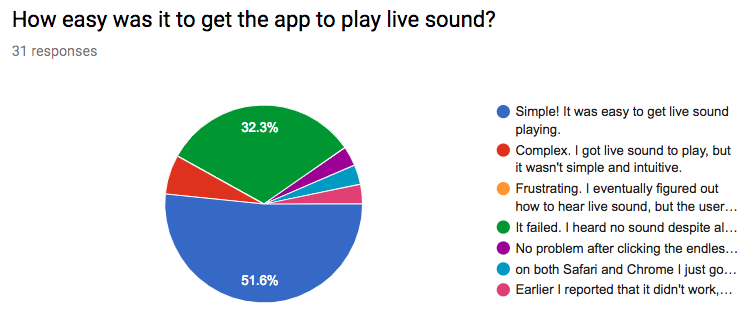
Git repositories
/
